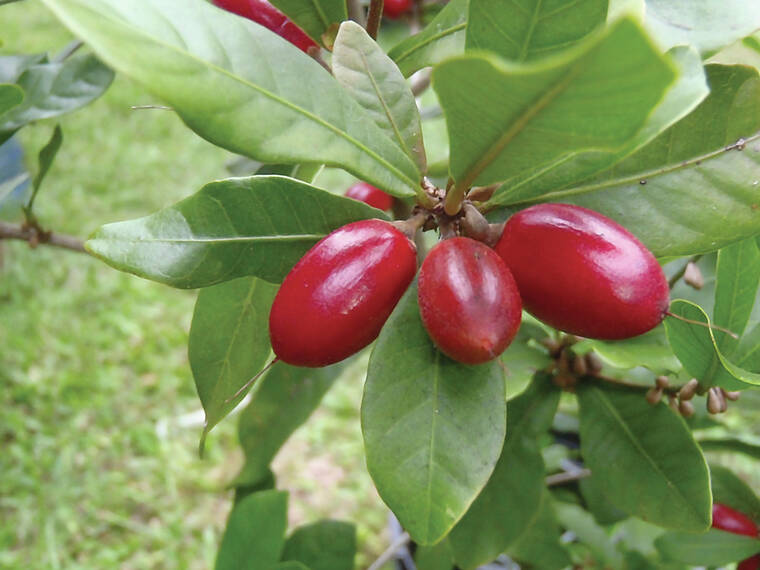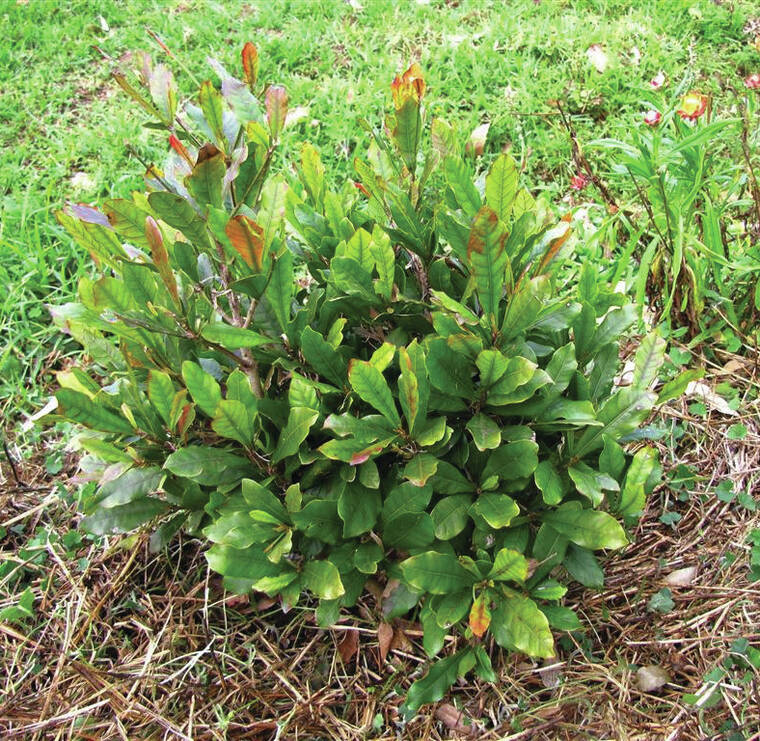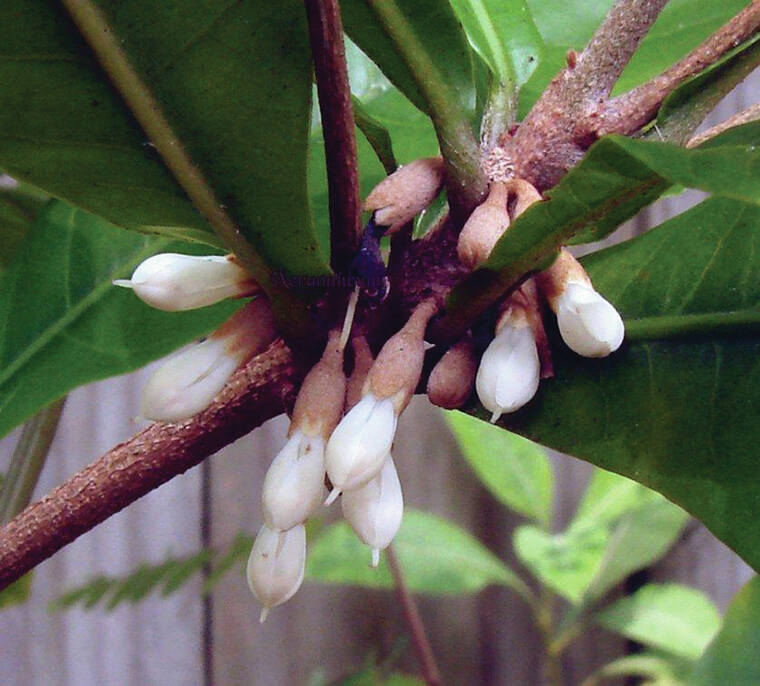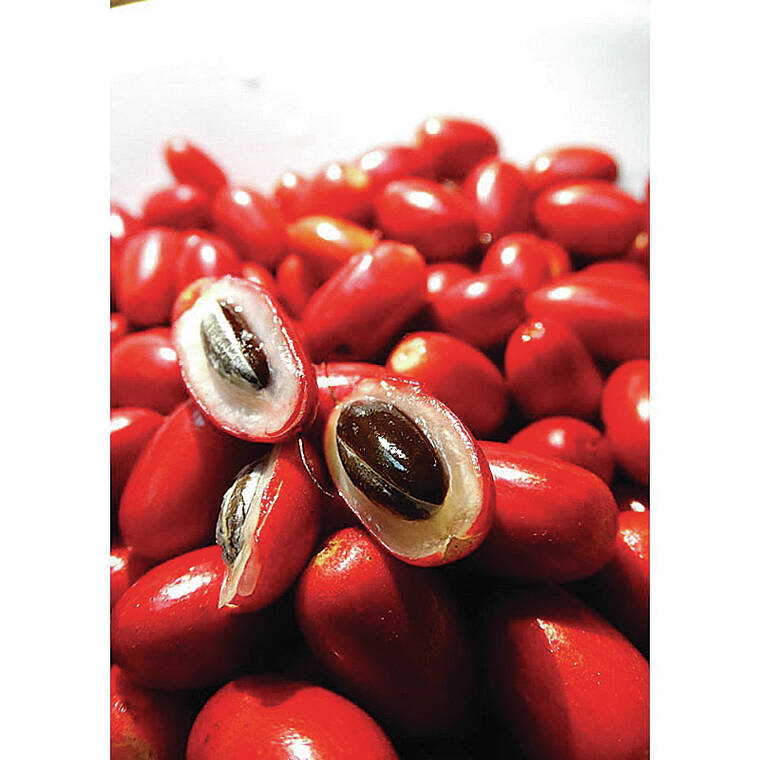These days we look for miracles wherever we can find them. Maybe you want to plant one.
The miracle berry plant is certainly an option that is locally available and grows well here. The miraculous characteristic of this fruiting shrub is in the edible fruit. Once you have tasted the flesh of the berry, everything you eat for the next hour or so will taste sweet. Taste the tartness of a lemon; then taste a miracle berry and the lemon juice becomes sweet in your mouth. Now, that’s a miracle.
This very unusual fruit, known botanically as Synsepalum dulcificum, is in the large Sapodilla or Sapotaceae family. Several other tropical fruit specimens including star apple, chico and egg fruit are close relatives of the miracle berry. All share the characteristic of milky sap and sweet fruit, but miracle berry is the only one that alters your taste buds.
The active ingredient in miracle berry is a glycoprotein called miraculin. Though the fruit is native to western and central Africa, it is now cultivated in many tropical locales and sometimes maintained as a potted specimen in temperate climates where it can be grown indoors in winter.
The taste-altering effect of the berries is often used to improve the taste of sour or acid foods and drinks. It can be helpful to those undergoing medical procedures that cause food to taste unpleasant. It is also sometimes served at parties as an entertaining curiosity.
West Africans have used the berry for centuries. The first European report on the fruit was made by the explorer Chevalier de Marchais during a 1725 excursion to West Africa. He recorded an observation that local people picked the berry and chewed it before meals.
The American botanist David Fairchild first came across miracle berry in a botanical garden in Africa’s Cameroon in 1927. He was offered miracle berries to taste. Shortly after tasting them, he was offered a beer and was struck by its sweetness. He thought the berries might be behind the flavor change and after requesting a lemon to taste, he was sure. He collected seeds and went on to introduce the fruit throughout his travels.
Though miraculin was in line to be offered as an alternative sweetener in the U.S., the FDA banned it in 1974 for no apparent reason other than the public’s suspicion that the sugar industry opposed it. Today, however, you can legally grow your own or buy miracle berry tablets online.
The plant is an attractive evergreen shrub that can grow to 10 feet tall over time. It can be grown from seed or cuttings. The seeds are about the size of coffee beans and can be planted directly in the garden or propagated in pots. They may take two to three weeks to germinate. Cuttings will develop roots more quickly if maintained in a mist house or a very humid environment. They can take a month or more to develop strong roots.
You can grow miracle berry plants in partial shade or full sun. The plant has a slight preference for acid soil (around pH 5 to 5.8). Acidifying amendments may be needed to grow miracle berry successfully at lower elevation where the soil is likely more basic.
Although somewhat drought tolerant, local growers have reported that the plants are more productive in soil that drains well but maintains some moisture. The plants dependably produce more flowers and fruit toward the end of rainy season or when soil moisture is maintained.
White quarter-inch flowers will appear in flushes nearly year-round. The red fruit is nearly an inch long with a red skin and white flesh protecting a single black seed.
Miracle berries are humidity-loving plants. If grown in pots, they need to be in a sunny indoor spot and misted regularly to maintain high humidity. Outside, potted miracle berry plants will do well in partial shade.
Miracle berry maintenance is not challenging. You can prune the branches to maintain the size and shape you prefer. Though the plants are not usually attacked by insects or diseases, frequent monitoring can catch problems early and lead to successful diagnosis and treatment. Growing them in healthy soil and applying light fertilizer twice a year will help them thrive.
Miracle berry seedlings grow somewhat slowly but will usually flower and fruit in three to five years. The small white flowers are sweetly fragrant and the red berries are an attractive accent to the dark green leaves.
Several local growers have small miracle berry plants for sale. Tropical Edibles Nursery in Captain Cook has a few. Ken Love also reports having some small specimens available. Call Tropical Edibles at (808) 328-0420 or Ken at (808) 443-8722 to check on their supply.
However, you find miracle berry plants, growing them will surely add interest to your garden and sweetness to your food. Happy tasting.
Diana Duff is a plant adviser, educator and consultant living part time in Kailua-Kona.










